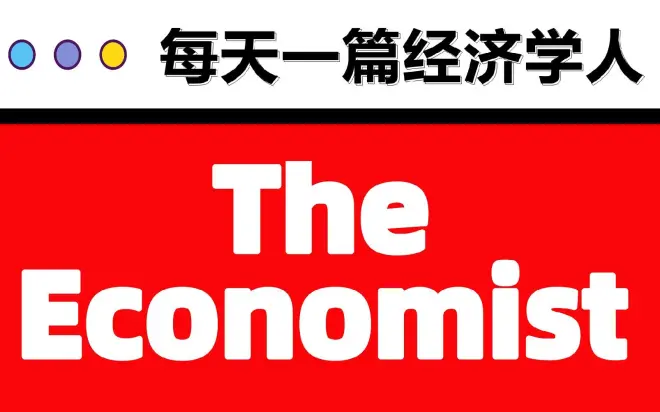每天一篇经济学人 | Genetic modification 基因改造(...

Thanks to great strides in fundamental research, biology is becoming ever more programmable. Two recent scientific advances show just how powerful the possibilities could be. The genetic modification of plants is allowing the mechanism of photosynthesis to be tinkered with, as research published in Science on August 18th sets out. This could lead to dramatic improvements in the productivity of plants, and eventually to a second green revolution. Tweaking the genes of people who suffer from fatal incurable diseases, meanwhile, has also had remarkable results. A series of genetic therapies has arrived, or is arriving, in clinics to treat blood cancers, spinal muscular atrophy, haemophilia and sickle-cell disease. The task now is to spread these gains far and wide.
【1】photosynthesis 光合作用
【2】haemophilia 血友病
由于基础研究的巨大进步,生物学正变得更具可编程性。最近的两项科学进展显示了“基因革命”的可能性有多么大。8月18日发表在《Science》期刊上的一项研究指出,对植物进行基因改造可以修补光合作用机制。这可能会极大地提高植物的产量,并最终引发第二次绿色革命。与此同时,对患有致命不治之症的人的基因进行略微调整也取得了显著的效果。一系列治疗血癌、脊髓性肌肉萎缩、血友病和镰状细胞病的基因疗法已经或即将进入诊所。现在的任务是大范围推广这些成果。
The consequences of both advances could be momentous. The genetic modification of crops promises cheaper, more nutritious and more climate-resilient food for a hungry planet. Genetic therapies offer the hope of curing devastating diseases. They also allow for one-time treatments that can be transported to the four corners of the Earth, bringing years, decades or a lifetime of benefits to the seriously and incurably ill. Imagine a cure for aids or sickle-cell disease that could be taken to the continent of Africa or across the Middle East. The accompanying benefits would be similar to the eradication of smallpox.
这两项进展带来的影响可能是重大的。转基因作物为饥饿的地球带来了更便宜、更有营养、更能适应气候变化的粮食。基因疗法为治愈毁灭性疾病带来了希望。它们还使一次性治疗成为可能,并运送到世界各地,为严重和不治之症带来数年、数十年或终生的好处。想象一下,艾滋病或镰状细胞病的治疗方法可以被带到非洲大陆或整个中东地区。随之而来的好处将类似于根除天花。
This tantalising promise has been made possible by a prodigious investment in fundamental research over the years. Basic knowledge of genetics and the functions and structures of proteins has proved to be a motor for discovery across medicine and agriculture. The private sector, to be sure, plays an essential role in the cycle of innovation. But these advances are a reminder that investment by governments and charities is crucial in areas that offer little commercial benefit in the short term, but which in the long term promise to greatly advance well-being. Much of the success in treating rare diseases is a consequence of the efforts of charities, often thanks to fundraising by patients and their families. Research that benefits low-income countries frequently relies on philanthropic donors with deep pockets, such as the Gates Foundation. The investments made in fundamental science today yield the productivity gains of tomorrow.
【1】prodigious 庞大的;惊人的
【2】philanthropic 慈善的
这一诱人的前景是由于多年来对基础研究的巨大投资而成为可能的。遗传学和蛋白质的功能和结构的基本知识已被证明是跨医学和农业发现的动力。可以肯定的是,私营部门在创新周期中发挥着至关重要的作用。但这些进步提醒我们,政府和慈善机构的投资在短期内几乎没有商业效益、但从长远来看有望大大改善人类福祉的领域至关重要。治疗罕见疾病的成功很大程度上是慈善机构努力的结果,这通常要感谢患者及其家人的筹款。造福低收入国家的研究往往依赖于财力雄厚的慈善捐赠者,比如盖茨基金会。今天对基础科学的投资会带来明天的生产力收益。
Unfortunately, there is no guarantee that these gains will be realised. Gene therapies are a remarkable technical accomplishment. But their current enormous cost—often well over $1m to treat a single person—makes them hard for health-care systems to afford, even when they are reserved for fatal rare genetic diseases. The idea of using them to treat more prevalent conditions looks prohibitively pricey.
【1】prohibitively 使人望而却步地
不幸的是,没有人能保证这些收益能够变现。基因疗法是一项了不起的技术成就。但它们目前的巨额费用(通常治疗一个人的费用超过100万美元)使得医疗保健系统难以负担,尽管它们有为致命的罕见遗传疾病储备。用它们治疗更普遍的疾病的想法看起来非常昂贵。
In the past, novel medicines that started out extremely costly have become cheaper. Monoclonal antibodies, useful laboratory-made proteins, were expensive when they first arrived, before a decade of advances brought them down in price 50-fold, according to Boston Consulting Group. If gene therapy is to live up to its promise, it will need to do even better than this. More efficient photosynthesis, too, will need further investment if it is to be commercialised.
在过去,一开始极其昂贵的新药物已经变得更便宜。据波士顿咨询集团称,单克隆抗体是一种有用的实验室制造的蛋白质,其刚问世时价格昂贵,后来十年的进步使其价格下降了50倍。如果基因疗法要实现它的承诺,它需要做得比这更好。更有效的光合作用如果要商业化,也需要进一步的投资。
The long-term manufacturing costs of a new green revolution will, thankfully, be low; plants make more plants in a way that treatments never can. Gene therapies, however, need innovation to reduce the cost of making them, whether this is in bioreactors or some completely novel way. If they are to become more affordable, new therapies also need to experiment with payment mechanisms, such as charging in instalments or by results. Pooling demand internationally to purchase therapies could help lower prices, too. Here governments, charities and the private sector could usefully work together.
值得庆幸的是,一场新的绿色革命的长期制造成本将会很低;植物可以以一种治疗永远无法做到的方式“生产”更多的植物。然而,基因疗法需要创新来降低制造成本,无论是用生物反应器还是一些全新的方法。如果想让这些疗法变得更便宜,还需要尝试支付机制,比如分期付款或按结果收费。将国际需求集中起来购买疗法也有助于降低价格。在这方面,政府、慈善机构和私营部门可以进行有益的合作。
Last, regulators also need to be quicker and more understanding of the gains to society from helping these technologies reach their potential. Innovations can languish without appropriate or timely rule-making. The regulation of genetically modified crops has been held back by misinformation campaigns, delaying benefits and raising costs. Likewise, although experimental drugs obviously need scrutiny, regulators should remember that the alternative in otherwise untreatable genetic diseases is often death. Science has made a genetic revolution possible. Now that revolution must flourish.
最后,监管机构还需要更快、更多地了解帮助这些技术发挥潜力对社会的好处。没有适当或及时的规则制定,创新就会停滞不前。对转基因作物的监管一直被错误的信息宣传活动所阻碍,它拖延了收益并提高了成本。同样地,尽管实验性药物显然需要仔细审查,但监管机构应该记住,在其他无法治疗的遗传疾病中,替代疗法往往是死亡。科学使基因革命成为可能。现在,这场革命必须蓬勃发展。

